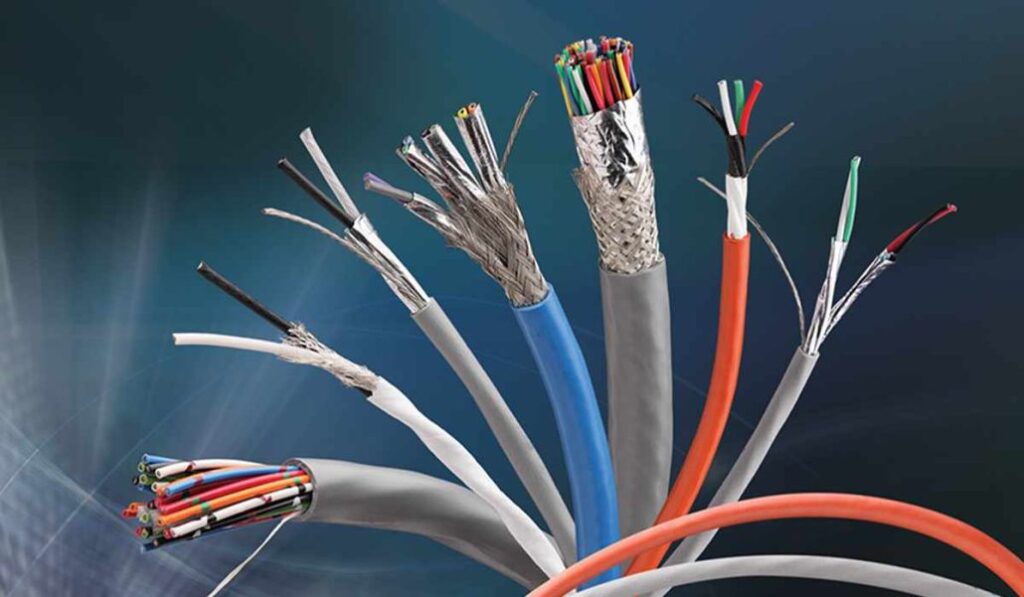Practical Uses of Cable Types and their Applications and Functions
What is Cable?
Cable refers to wires bundled and packed in plastic or rubber coverings to transmit electricity or electronic signals to homes, businesses, and industries. Also known as Electric Cables. The labels written on cables in Pakistan can vary depending on the type of cable, its purpose, and the installer. However, here are some of the most common labels you might find:
- V: Voltage
- Cu: Copper
- Al: Aluminium
- AC: Alternating current
- DC: Direct current
- AWG: Refers to the thickness of the conductor wires
- PVC: Polyvinyl Chloride
- SWA: Steel Wire Armour
- AWA: Aluminium Wire Armour
- Cat6: Ethernet cables
- HDMI: High-Definition Video Cables
- XLPE: Cross-Linked Polyethylene
Application or Uses of Cables in Practical Life
Cable in Pakistan play a crucial role in various sectors, powering homes, industries, and communication networks. Such as:
- Power Transmission and Distribution
- Industrial and Commercial Applications
- Communication and Information Technology
- Home and Consumer Electronics

Types of Cables Used in Power System
In the complex symphony of a power system, different types of cables play crucial roles in transmitting and distributing electricity across various stages, from generation to home appliances. Here’s a key player:
Control Cable
These unsung heroes carry signals and data for monitoring and controlling the power system. Control Cable is typically smaller in diameter and can be made of copper, fibre optic, or wireless communication.
Types of Cables Used in Networking
The digital world runs on a web of invisible threads – network cables. Here’s a breakdown of the most common types you’ll encounter:
1. Twisted Pair Cable
The workhorse of the networking world, twisted pair cables (TP) consist of pairs of insulated wires twisted together. This simple yet effective technique reduces electrical interference, making it ideal for data transmission.
2. Coaxial Cable
Once the king of networking, coaxial cables have been mainly replaced by twisted pairs. They consist of a central conductor surrounded by an insulating layer and a metal shield, offering excellent noise immunity. However, their thicker size and higher cost make them less practical for modern networks.
3. Fiber Optic Cable
The future of networking lies with fiber optic cables. These cables use thin glass of fibers or plastic to transmit data in optical pulses, providing unmatched speed, bandwidth, and immunity to electromagnetic interference.
4. Building wires
Building wires are electrical cables specifically designed for permanent installations within buildings. It supports basic power supply and also carries audio and video signals for intercoms, CCTV systems, and other communication infrastructure within a building.
Types of Cables Used in Computer
Inside your computer and beyond, a symphony of cables orchestrates data and power flow, each playing a unique role in bringing your digital world to life.
Internal Data Cables
Power cable
Power cables are the lifeblood of your computer, bringing the electricity needed to power its circuits. They connect the power supply to the motherboard and other components.
External Data Cables
These cables connect your computer to the outside world and handle various tasks, such as USB, HDMI, DisplayPort, and Ethernet.
Types of Cables Used in Electrical
Solar Cable
Solar cables are specialized electrical wires and cables that form the arteries of a photovoltaic (PV) system, carrying the DC (direct current) electricity generated by solar panels to inverters and, ultimately, the grid or battery storage. These cables are reliable for extreme temperatures, UV, and weather conditions.
FAQs

